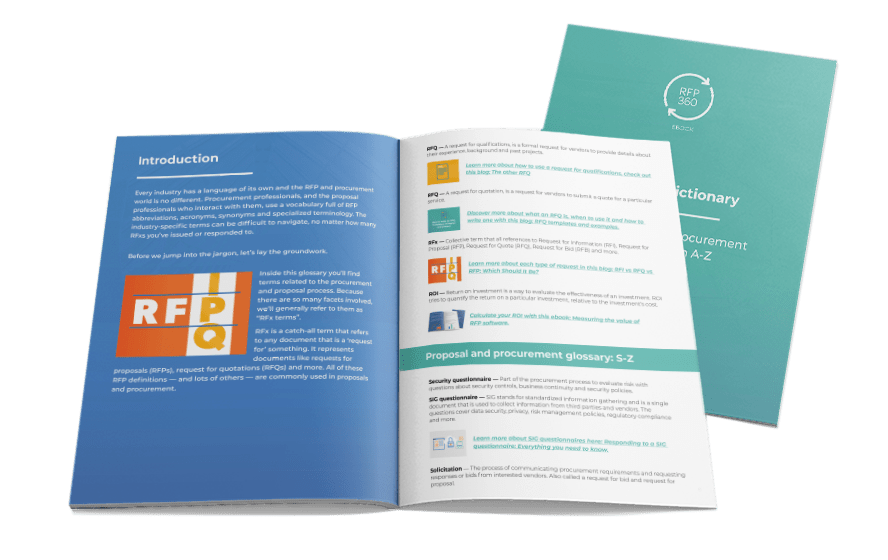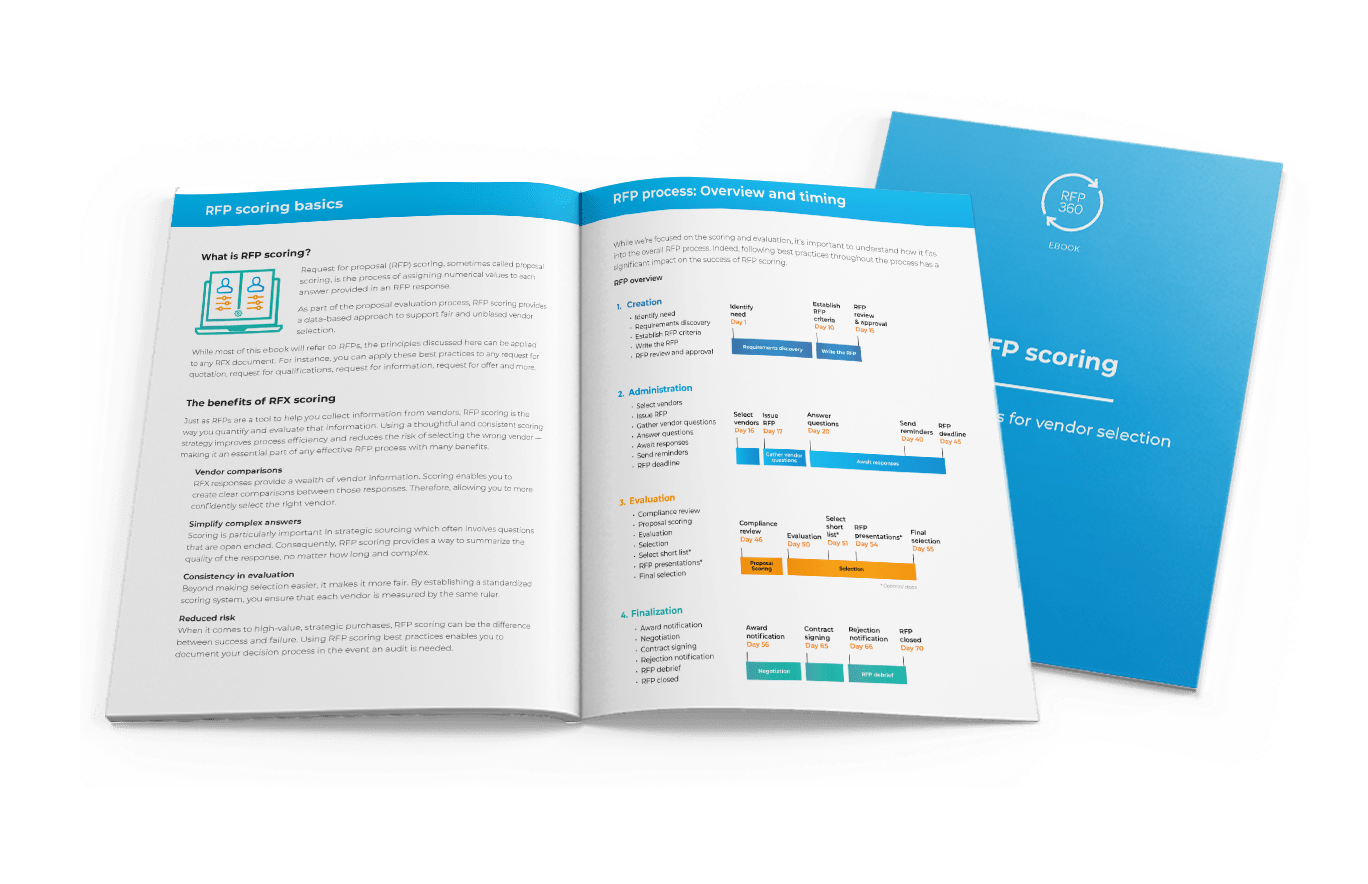When making a big purchasing decision, a request for proposal (RFP) can help you select the right vendor and reduce risk. Consequently, many organizations require an RFP before contracting with a vendor as a standard part of their procurement policy. Despite how common the process is, most people have no RFP training before being asked to manage one.
Like any other business process, there are best practices for using RFPs. Generally, people learn through years of practice and experience. However, if you’re an RFP first-timer tasked with making a strategic, high-value purchase, doing a little RFP training ahead of time will pay dividends in efficiency and confidence. It can be the difference between success and failure when tens or hundreds of thousands of dollars are on the line. Fortunately, there are plenty of resources available online to help. Indeed, we’ve gathered the best of them here.
In this post, we’ll share the best resources for learning and mastering the request for proposal process. To start, we’ll offer introductory information, definitions and tools for first-timers. Then, we’ll dig deeper to explore RFP training for those looking to expand their knowledge and build confidence. Finally, we’ll provide concepts and approaches for advanced and master RFP issuers.
Beginner RFP training: RFP 101
If you’re new to RFPs, this is a good place to start. First, explore common terminology. Next, checkout an overview of the RFP process. Then, explore how to write your first RFP.
RFP glossary
It seems like every business process has a language all its own. And, the request for proposal is no different. This glossary is great to have at hand while you explore these RFP training materials. Indeed, many of the resources in this list use acronyms, abbreviations and jargon that may be unfamiliar if you haven’t issued an RFP before. Download the glossary and explore each definition throughout your self-guided RFP training.
In this blog, which you can download as a PDF for quick reference, you’ll find a rundown of RFx definitions and procurement terminology.
Glossary: RFP and RFX definitions: A proposal and procurement glossary from A to Z

How to write an RFP
On the surface, writing an RFP seems easy — just ask for what you need. However, this oversimplification often leads to challenges. Effective RFPs are well-researched, collaborative and objective. Explore more about how to write an RFP in this guide and video.
Guide: How to write an RFP: Tips, templates and tools
Video: How to write an RFP - Presentation by Epay Systems
Insightful RFP questions
Every day we talk to people looking for advice about how to issue RFPs. One of the most common questions they ask is, ‘How do you know what to ask?’. The confusion is understandable because your RFP should be both concise and thorough. Indeed, finding the right balance takes practice. Fortunately, we have two helpful resources for you to explore: A guide for writing RFP questions as well as a list of common RFP questions.
Guide: The best request for proposal (RFP) questions to ask vendors
List: 101 sample RFP questions: The ultimate list of questions to ask vendors
Intermediate: Building on the basics
If you’ve issued an RFP or two in the past, but weren’t satisfied with the process or results, you may just need to dig a little deeper. The RFP training resources here build on foundational knowledge and experience. Indeed, in this section you can explore a helpful process guide, how to use RFP templates.
RFP process guides
When it comes to optimizing your RFP results, consistency is key. Consequently, following a consistent and well-defined process improves efficiency, effectiveness and data capture. When you’re ready to take your RFP training to the next level, map your process and make adjustments based on these best practices.
These two guides, one from RFP360 and one from Hubpsot, are incredibly thorough. Each provides a slightly different perspective on how to manage the RFP process from beginning to end. As you review them, consider how the principles could be applied within your own organization.
Guide: RFP process ebook

Guide: The ultimate guide to RFPs - Hubspot
Tips for using RFP templates
When sourcing a new product or service, many people look for an example to reference. Using RFP templates can save time and boost your confidence. However, if used incorrectly, the wrong template could cost you time and be seen as a red flag for prospective vendors. Explore how to use RFP templates to speed up your process while also meeting your organization’s needs. In addition, you can check out 33 of the most commonly requested RFP examples.
Guide: 9 best practices for RFP templates
List: 33 of the best RFP examples by industry
How to score RFPs
Once you’ve written and issued your RFP, you’ll receive proposals from vendors. The next step? Make sense of the responses. Fortunately, RFP scoring makes it easy. When you score your RFP, you can objectively evaluate vendors and justify your purchase.
Guide: RFP scoring ebook: Vendor selection best practices

Advanced: RFP training masterclass
If you issue more than four RFPs per year, you could benefit from advanced RFP training. These concepts make your RFP process even more strategic, sophisticated and streamlined. Additionally, you may consider formalized training designed for procurement career development.
Weighted scoring
For complex purchases, simple scoring may not be the best choice. When evaluating several vendors based on RFP criteria with varying importance, using RFP weighted scoring is a good bet. Essentially, RFP scoring assigns a value to RFP questions and sections based on their importance to the project. Explore everything you need to know about weighted scoring in this webinar.
Webinar: RFP weighted scoring
Exploring the RFP landscape
RFPs and other vendor information requests are widely used, but underappreciated. Recent research conducted by the Art of Procurement and RFP360 explores how RFPs are used, challenges faced by procurement teams and the current state of best practices.
Guide: RFP research: Procurement statistics to know
Strategic sourcing guide
For many people, RFPs are simply a way to pick a partner. However, with the right RFP tools, you can elevate the process and improve long-term value. The strategic sourcing approach elevates the vendor selection process and maximizes overall vendor value.
Guide: Strategic sourcing: 7 steps and best practices
RFP technology
For many, managing RFPs in Word, email and spreadsheets is difficult and time-consuming. Indeed, organizations that regularly use RFPs can reduce the time they take by up to half when they leverage a request for proposal tool like RFP360. In addition to centralizing the process, the software automates the RFP process.
Video: RFP management software overview
Conclusion
Not only does the RFP process improve transparency, increase vendor value and reduce risk, but it's also a valuable skill for practitioners. Fortunately, there are countless additional resources online to hone your skills and deepen your expertise. Armed with the right information and approach, you can make RFPs your superpower.
For more RFP training guides and tips, check out RFP360's full catalog of resources.

